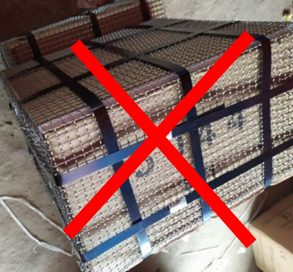October 23, 2020
By Chris Reese

Every year the consumer fireworks market is under substantial peril. In 2019 the market was bracing for its greatest threat ever. Two of the largest consumer fireworks retailers teamed up to change the industry forever. Like a thief in the night, secret negotiations were made with the consumer protection safety commission to remove all metals in aerial fireworks. In short, removing all metals would render all consumer aerial fireworks useless and the industry would have been reduced to safe and sane fireworks like fountains and sparklers. While this may seem counterintuitive to the average consumer, the retailer giants had everything to gain and nothing to lose. Their goal, under the guise of safety, was to create an extremely profitable monopoly of the industry. With the supply chain agreements in place with Walmart locations all over the country it was a slam dunk. Thankfully at the stroke of midnight the National Fireworks Association was made aware of this hostile takeover plot and in late 2019 the industry was saved allowing it to survive another day.
In conjunction with the industry turmoil, in 2019 fireworks were also facing a 25% tariff due to the hostile trade relations with China. Fortunately, just in time for the importing season the 25% tariff was lifted and once again the industry could take a brief sigh of relief.
Fast forward to 2020 and the fireworks industry once again faces tremendous obstacles that will likely force significant changes for the foreseeable future. In 2020 the fireworks industry not only survived Covid but thrived! While this may be cause for celebration, 2021 does not look so rosy for the consumer’s wallet. The combination of factory shutdowns due to Covid 19, tragic factory accidents in China, and decimated inventory across the industry, has caused a perfect storm of a major supply chain log jam that simply cannot meet the US and European demand. To add insult to injury the Chinese government continues to force permanent closures of fireworks factories. It is no secret the Chinese government would prefer to abolish the fireworks industry altogether.
Over the last five years consumer fireworks have increased in cost on average about 5-10% year over year. However, this potentially may pale in comparison to what we see starting in 2021. The primary reasons for the price increase in the past include continued increase in demand, raw materials, labor, and shipping. There is no evidence that these price increases within the supply chain will abate anytime soon. To make matters worse the Chinese government is about to enforce a new regulation that will further increase the cost of consumer fireworks and will likely forever change their performance.
In 2021, all fireworks with tubes greater than 1.2 inches in diameter will need to be caged for shipping. In conjunction with the supply chain issues mentioned above, this will likely start to further escalate prices for years to come.
So why is the Chinese government requiring cages and how will this increase the retail prices of consumer fireworks? To be direct the US market does not quite understand the reasoning behind the Chinese government’s position on this new regulation. The Chinese government claims that the cages will provide an extra layer of safety during fireworks transportation. However, without going into a long lengthy explanation as to why this position is false, the cages will do nothing but add cost to the products affected and waste to US landfills.
At this point most Chinese factories expect an increase of about $12 to the case price of the items that will require a cage which is $3 per item for a 4/1 packed case. While that does not seem like much, as it moves along the supply chain the cost will exponentially increase. For example, let us say that firework X, packed 4/1, has a current FOB case price of $68 and the tube size is greater than 1.2 inches requiring it to be caged. This will increase the FOB price to $80 or by 17%. Keep in mind the cage will also increase the size (or cubes) of the case taking up more space on the shipping container and increasing the shipping cost. Once the case lands in the US the distributor may remove the cage or may leave the cage for the retailer to remove. Either way the cost will once again increase either through added shipping weight and extra labor for the retailer to remove the cages or extra cost for the distributor to remove and dispose of the cages. So, let us add another $1 per case to account for this added cost. This brings the landed distributor cost to $81 or an increase of 19%. Unfortunately, the cost increase will not end at this point. The distributor must add their margin to the total landed cost. As you will see their margin will only exacerbate the case price of product “X”.
Original landed cost without the cage with shipping: $68 FOB + 30% shipping cost = $88.40
Landed cost with the cage including shipping: $80 FOB + 31% shipping ($24.80) + $1 cage removal = $105.80
Now let us add in the distributor’s margin for sale to retailers throughout the US:
Without cage distributor/wholesale price: $103.43
VS.
With cage distributor/wholesale price: $123.79
What was an initial $12 price increase has now roughly grown to $20. However, we still need to calculate the estimated retail price to get a better understanding of how this will impact the consumer.
To do this we need to add the average shipping cost and margin for the retailer:
Current retail price per item (non-caged): $68.52 (non-caged, shipping cost and average industry margin)
VS.
Projected retail price per item (with cage): $82.01
What was initially just a $3 increase per item has now inflated to $13.50 per item or a whopping $54 per case! Most consumers will by more than just one item which means China’s new regulations will hit their wallet hard in 2021. Also, keep in mind this is just using industry averages. Some areas will see an even higher increase for their market. Finally, what is even more concerning is that we do not know how shipping and raw material cost inflation will increase this price even further nor do we know how increase in demand will raise product cost.
There is no doubt the price increase forecasted for 2021 will be much more substantial then we have seen in the past and it most likely will not go unnoticed by the consumer. Unfortunately, this will not be the last threat to the industry as there are more perilous times ahead and baring another last minute miracle some fireworks are literally about to explode.

